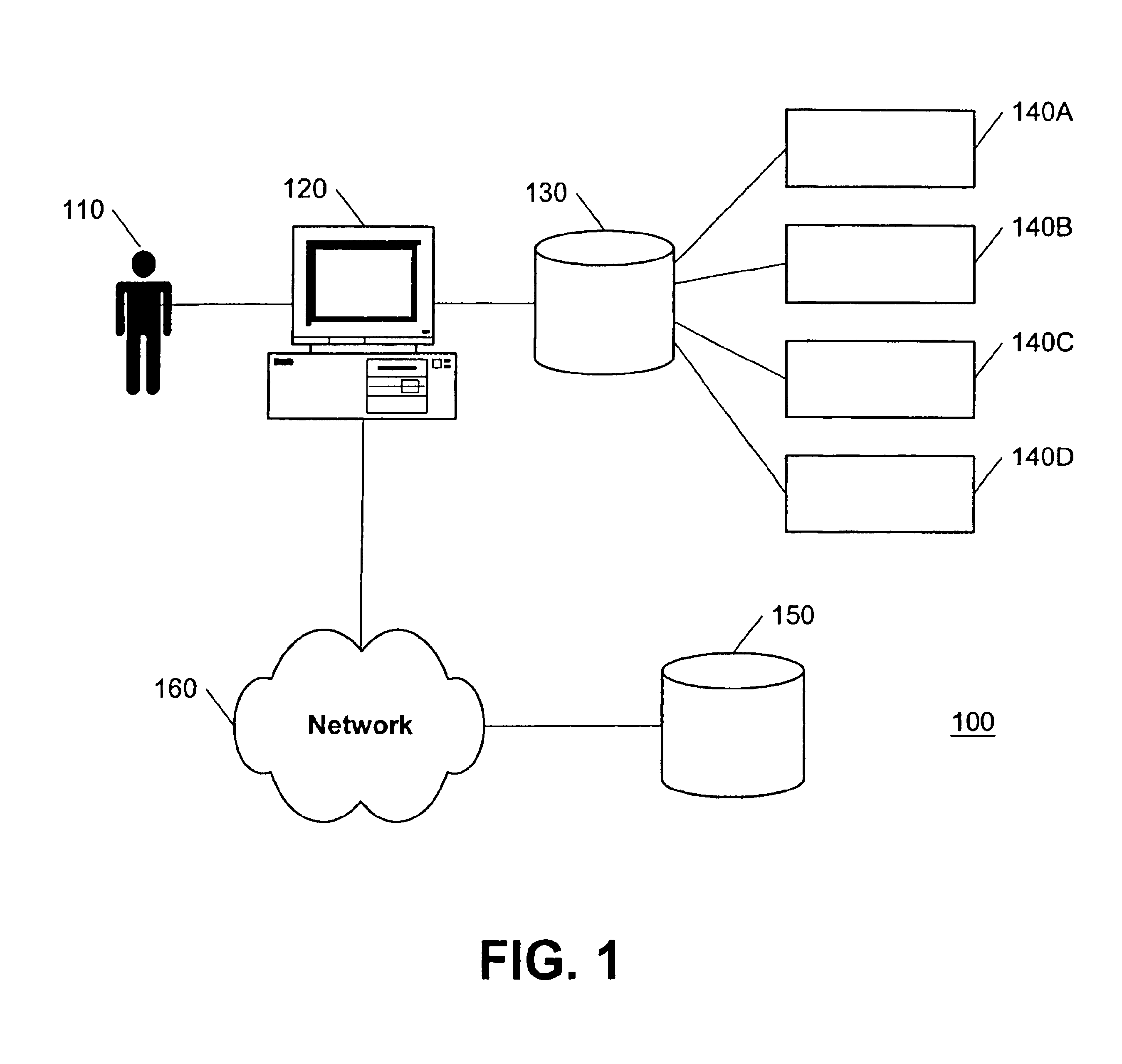System and method for organizing data
a data system and data technology, applied in the field of databases, can solve the problems of difficult search, limited data organization, and limited conventional methods for and achieve the effects of improving efficiency, methods, and searching and retrieving data efficiently
- Summary
- Abstract
- Description
- Claims
- Application Information
AI Technical Summary
Benefits of technology
Problems solved by technology
Method used
Image
Examples
Embodiment Construction
System Overview
[0049]The present invention is directed to a system and method for organizing, searching and retrieving data. The present invention is described below with respect to various exemplary embodiments, particularly with respect to various database applications. However, various features of the present invention may be extended to other areas as would be apparent.
[0050]FIG. 1 illustrates an exemplary environment in which the present invention operates. Environment 100 includes a user 110 interacting with a computer 120. In various embodiments, the present invention is embodied in software, hardware, firmware or other similar structures and devices, and / or combinations thereof, operable on or with computer 120. Computer 120 may be connected through a network 160 to one or more data sources 150 that contain data. Network 160 may be an internet, such as the World Wide Web (“the Web”), an intranet, such as a company LAN or similar network, or other networks including various w...
PUM
 Login to View More
Login to View More Abstract
Description
Claims
Application Information
 Login to View More
Login to View More - R&D
- Intellectual Property
- Life Sciences
- Materials
- Tech Scout
- Unparalleled Data Quality
- Higher Quality Content
- 60% Fewer Hallucinations
Browse by: Latest US Patents, China's latest patents, Technical Efficacy Thesaurus, Application Domain, Technology Topic, Popular Technical Reports.
© 2025 PatSnap. All rights reserved.Legal|Privacy policy|Modern Slavery Act Transparency Statement|Sitemap|About US| Contact US: help@patsnap.com



